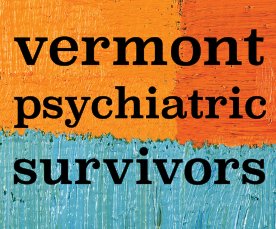With the Department of Mental Health still working to resolve prolonged wait times for psychiatric inpatient beds, hospitals have turned to the Vermont Program for Quality in Health Care to learn how to improve services within their emergency departments. One of its instructors, mental health advocate Kristy Hommel, makes use of her lived experience as a patient.
VPQHC, a state-sponsored nonprofit, has organized a four-hour course called “Trauma Responsive Care in Emergency Departments.” When Senior Program Manager Mary McQuiggan spoke to Counterpoint in August, eight hospitals had received the training, with two more scheduled.
According to McQuiggan, the course has a special focus on hospital workers’ interactions with children with psychiatric needs, who, owing to a relative scarcity of pediatric inpatient beds in Vermont’s mental health system, tend to end up stuck in EDs the longest. It begins, however, from the premise that trauma-informed practices can benefit anyone who shows up to the hospital in an emergency, no matter their age or the nature of their crisis.
“Ultimately, the thought is that you don’t know who has trauma,” McQuiggan said. “And it’s in no way advocating to ask everyone about their trauma history, because that would be really traumatizing. But the idea is that if you come from a perspective of understanding that anybody who walks in may have a trauma history, then you can work with them in a really curious, understanding, and supportive way that will make the experience better and more supportive for them and also better for their families and for the staff.”
Alongside Hommel, VPQHC hired a nurse practitioner, Matt Dove, and a social worker, Pete Cudney, to deliver the training. Although Hommel, who has a master’s degree in childhood education, had previously shared her story of suicidality and recovery in schools, on panels, and at the Vermont Police Academy, her colleagues’ clinical credentials made her, in her words, “a little nervous” at first.
It didn’t last long, though. “The three of us clicked, and it’s a joy to work with them,” Hommel said.
Hommel, who has survived two suicide attempts, has had some negative experiences in hospitals. She remembers how, when she was 14, she had to stand naked and fearful in front of a doctor and a nurse for a process called “body mapping,” which they used to track self-harm.
Years later, when she went to the ED for a kidney stone, the doctor – in a case of what she called implicit bias – misdiagnosed her symptoms as pancreatitis on account of her history of substance abuse, until a CT scan proved him wrong.
Visiting the ED on another occasion, during a mental health crisis, she ended up in a closed, empty room and began, for the first time, to dissociate, feeling as though she were watching herself in a black-and-white movie.
“People kept coming in and asking me the same question, basically to relive the crisis: ‘What brought you here today? What happened?’” Hommel recounted.
But Hommel has also had positive experiences. She recalls a nurse who brought her a warm blanket when she was cold and didn’t feel bold enough to ask for one. Another nurse spotted her sweet tooth and “would grab me an extra vanilla pudding” when she could.
“It’s a small thing, right? But she thought, she noticed, and then she was kind,” Hommel said.
As an instructor, she shares these examples with ED staffers.
“I talk about how people just want to be heard and seen and believed. Because, having a mental illness, you can’t really see it,” she observed.
According to McQuiggan, Hommel’s presentation has made an impact.
“All the staff have been so appreciative of her perspective, because they don’t often get to speak to patients after they leave and hear about their experiences and hear what was helpful and what wasn’t helpful,” she said.
While the instructors have made VPQHC’s course their own, it originated at the University of Vermont Medical Center, where, in McQuiggan’s telling, the pediatric psychiatrist Haley McGowan and the pediatric emergency medicine physician Christian Pulcini developed it for their staff. Through the Vermont Department of Mental Health, VPQHC received funding from the federal Health Resources and Services Administration to bring the idea statewide.
The first training took place on April 26. The course has four sections.
McQuiggan called the first “Trauma 101, understanding what trauma is, the basics.” The next deals with “secondary traumatic stress” – in other words, the potentially traumatizing effects of working within a trauma-laden environment – and what hospital employees can do to take care of themselves.
The third section centers on de-escalation during mental health crises.
“We provide them some strategies,” Hommel said. “We’ve got a really nice slide where it has all the things you can do if you have five minutes, all the things you can do if you have 10 minutes.”
The trainers also role-play various scenarios.
“Basically,” Hommel explained, “we’re showing me having a panic attack, [Dove] coming in, getting on my level, telling me that we’re in it together. So they get to see an interaction that could possibly happen.”
The final section highlights children’s particular needs. The trainers can administer the course twice in a day, making it available to workers on different shifts.
VPQHC reports positive feedback.
“Just anecdotally, the hospitals we’ve spoken to have asked us to come back. They’ve said, ‘Oh, we really want to bring all of our sitters into this training, or we want to get our security team to attend this training,’” McQuiggan said. “We’re hopeful that we’ll be able to do that next year and bring more folks in to be trained.”
Rutland Regional Medical Center received the training on May 8. Several nurses, medical technicians, and others attended, but the hospital’s priority was to train its emergency psychiatric technicians, according to Thera Blehar, the nurse manager of the ED’s psychiatric east wing.
“I think that the training and hearing from Kristy and her experiences, her perception of things – it just helps staff kind of take a breath before they respond and realize that not everything works for every person. And sometimes you have to be creative,” Blehar said.
Blehar noted that the training didn’t just tell the workers what they were doing wrong – it also told them what they were doing right.
“It was just nice to have that reminder for staff that, also, our patients do remember the good work that we do. You remember someone sitting and taking the extra five minutes talking to you or listening to you or playing a game with you or getting you that cup of water. It can be the little things that we do that have a huge impact on the patient’s experience when they visit us.”

